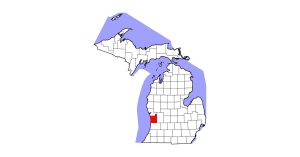Composting Is a Viable Method of Equine Carcass Management

One environmentally friendly option is carcass composting—a practice routinely used for carcass management in the swine and poultry industries. However, little evidence exists as to its efficacy and use for horses. So, a team of researchers from various universities recently performed a study to demonstrate successful equine mortality composting and document sodium pentobarbital concentrations throughout the process. University of Minnesota student Hannah Lochner, who is studying for a master’s degree, presented the group’s findings at the Equine Science Society’s 2021 virtual symposium.
In addition to environmental concerns, the existing management options for euthanized horses are increasingly limited, Lochner explained. Rendering facilities have limited abilities; burial comes with site restrictions and is not practical during winter months in northern climates; and incineration (cremation) is costly at about $1,600 per carcass. Composting—the natural, biological decomposition of a carcass aboveground—on the other hand, is biosecure, feasible, and eco-friendly.
To confirm this method’s ability to degrade carcasses and reduce sodium pentobarbital concentrations, Lochner and her fellow researchers performed a composting trial of four horses euthanized for terminal medical reasons from September 2019 to April 2020. At a location in rural Minnesota, they constructed four compost piles—one for each horse—that included the following layers:
- A 6-by-27-meter concrete pad as per state regulations;
- 50 centimeters of playground wood chips;
- 7 centimeters of pine shavings;
- 9 centimeters of manure mixture;
- The horse’s carcass, with a 61-centimeter perimeter between it and the edge of the wood chip base; and
- 61 centimeters of manure mixture covering and surrounding the carcass.
The team placed temperature loggers at depths of 46 and 91 centimeters to record pile temperatures every eight hours. They also turned the piles at Day 50 and concluded the trial at Day 216 (after five months of curing was complete). On these days, the team sampled three mirrored cross-sections of each pile and scored the amount of degradation from 1 (carcass discernable) to 5 (a few large bones remaining). They also analyzed sodium pentobarbital levels.
Lochner said that by Day 216, all piles received scores of 3 or 4, meaning the carcasses had degraded and only hair, hide, and large bones remained. Pentobarbital, while at low levels, was still detectable on Day 216. These concentrations were highest at the center of the pile on Day 50 and more consistent between cross-sections on Day 216.
“These findings suggest mortality composting is an effective method for managing equine carcasses,” said Lochner, adding that further research is needed to determine the environmental implications of composting chemically euthanized horses.

Written by:
Alexandra Beckstett
Related Articles
Stay on top of the most recent Horse Health news with















